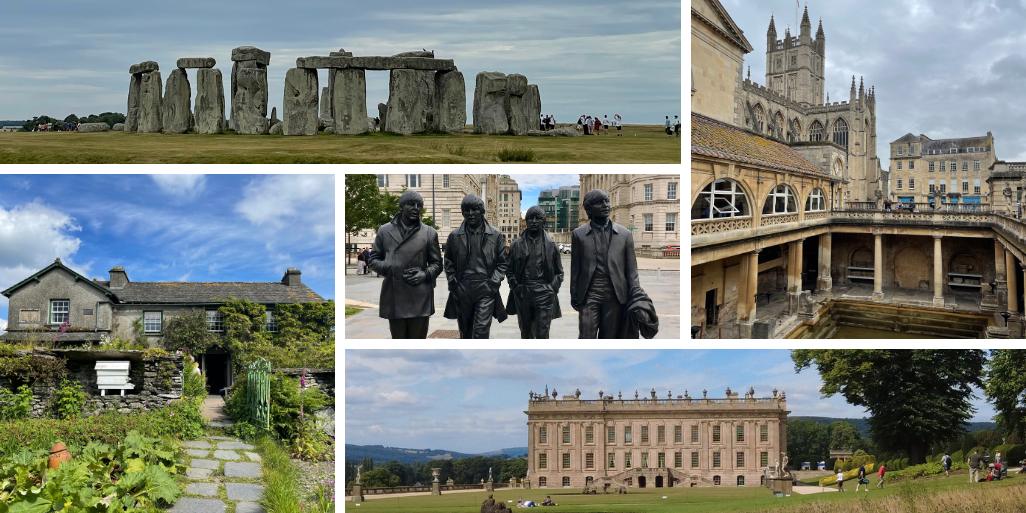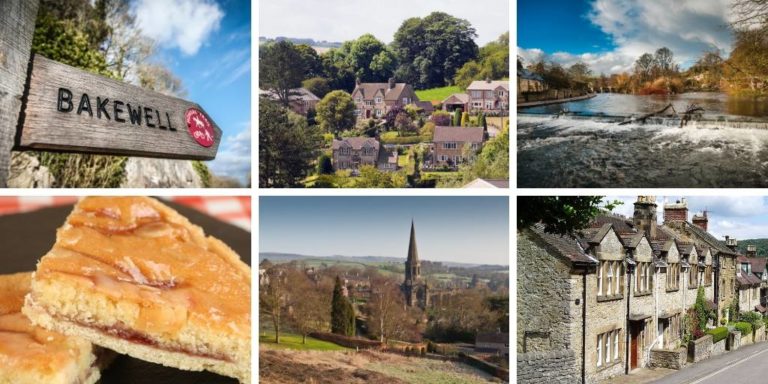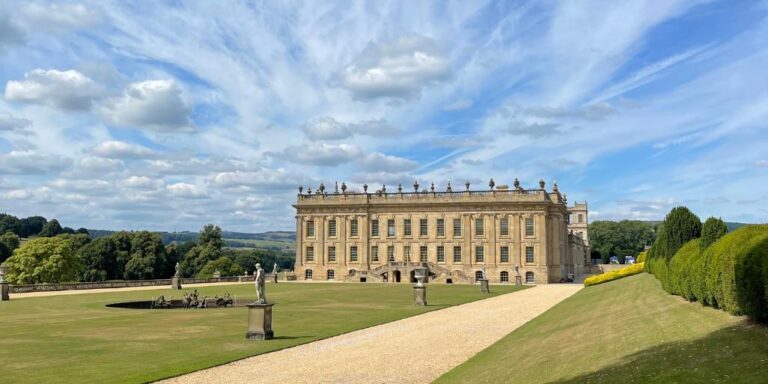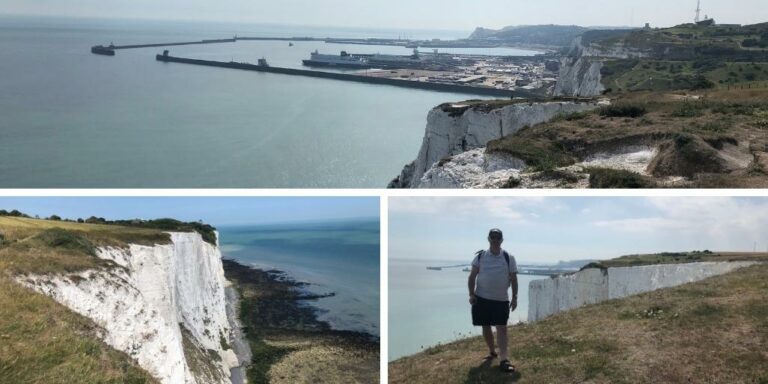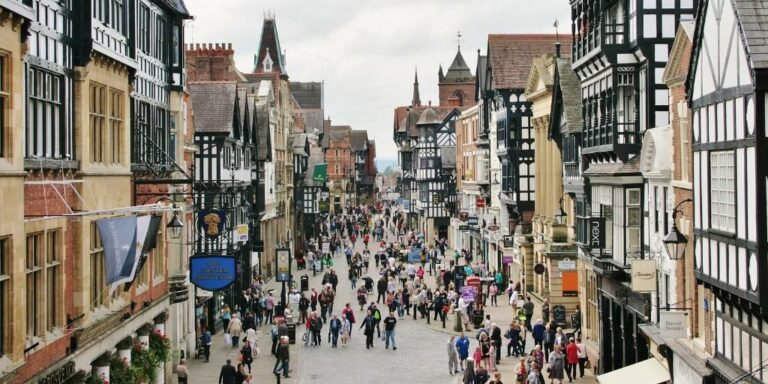18 Best Places To Visit In England
Narrowing down the 18 best places to visit in England is no easy task!
There are so many wonderful cities, towns and villages to visit, green countryside to explore and coastal areas to enjoy. Whether you love history, music, literature, food or art, England has an attraction or location for you.
However, few visitors can spend months or years exploring England so, if you have limited time, our pick of the best places to visit in England will help you plan a perfect England itinerary.
The Lake District
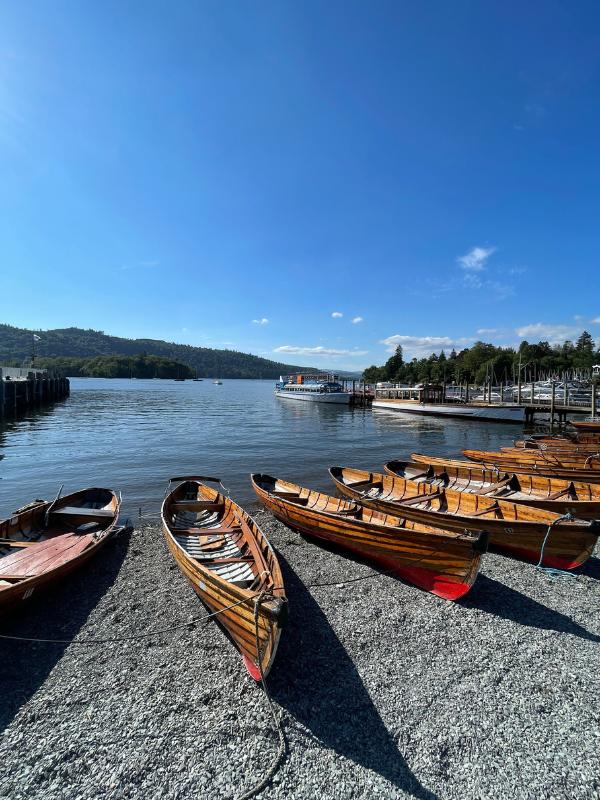

The Lake District is in the county of Cumbria in north west England, close to the Scottish border.
As its name suggests, the Lake District is best known for its 16 lakes which attract visitors from all over the world. It has some of the most dramatic scenery England has to offer including England’s highest mountain, Scafell Pike, at 978 metres / 3,209 ft.
The Lake District National Park is England’s largest park and was declared a UNESCO World Heritage site in 2017.
Top 5 things to do in the Lake District
- Lake Windermere – Take a scenic hop-on hop-off boat ride on Lake Windermere, which at 1.5 miles / 17 km long is England’s largest natural lake. Other lakes for boat trips include Coniston Water, Ullswater or Derwent Water.
- Hike a fell – Choose one of the numerous hiking trails to bag a fell (a Lake District mountain top).
- Visit the home of Beatrix Potter – The charming National Trust owned Hill Top House and farm is a delight and it’s easy to see where Potter’s inspiration for her beloved books came from.
- Castlerigg Neolithic Stone Circle – One of the oldest ancient stone circles in England, Castlerigg has 38 stones and spectacular surrounding views.
- The Pencil Museum – When it rains in the Lake District (and it does rain!) visitors flock to this Keswick museum. You’ll discover how pencils are made and see an eclectic collection including pencil sculptures and one of the largest colour pencils in the world.
London


The number 1 English city for visitors, London offers something for everyone.
It’s packed with historical landmarks, leafy parks and world-class free museums. Plus, its excellent bus, rail and underground network makes getting around the capital quick and easy.
London is a great base from which to explore the rest of the U.K as many popular locations such as Bath or Oxford are doable in a day trip.
Top 5 things to do in the London
- Buckingham Palace – The home of the British royal family opens every summer to allow visitors to tour its opulent state rooms. Highlights include the Throne Room and the palace gardens.
- The parks – If you like people watching head to Hyde Park, flower lovers should head to St. James Park and families will love Kensington Gardens. London’s parks are an ideal place to escape busy central London streets.
- The museums – There are so many to choose from, from famous museums such as the Natural History Museum to lesser known quirky museums such as Sir John Sloane’s. In my opinion, you can’t leave London until you’ve visited the V&A and the British Museum.
- Enjoy a boat ride on the River Thames – Whether you join a commentated boat trip, brave a speedboat, or take a leisurely clipper to Greenwich, a trip on the River Thames allows you to see London from a different angle.
- The Tower of London – This iconic landmark is simply unmissable. Explore the White Tower, the Bloody Tower and marvel at the crown jewels. Make sure you leave time to visit the adjacent Tower Bridge.
York
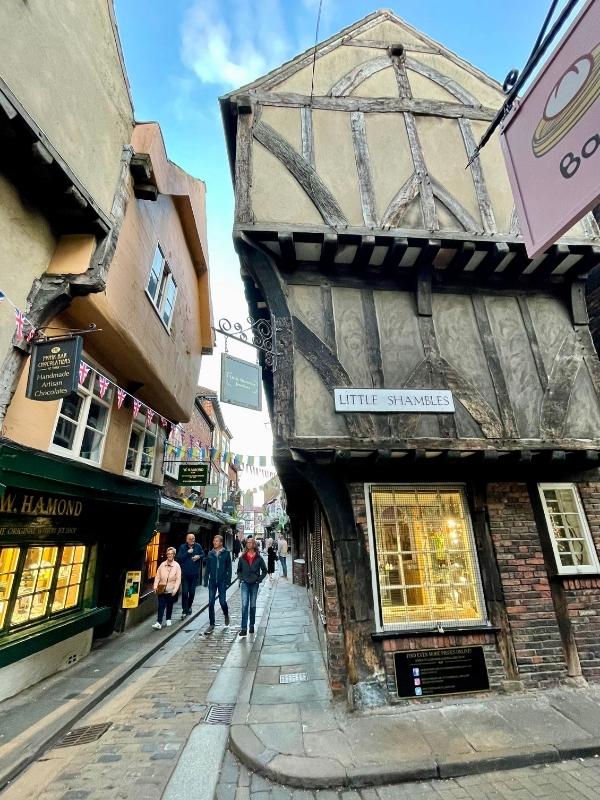

The compact City of York in northern England can be reached in 2 hours by train from London’s King Cross station.
It’s a fascinating city packed with Viking, Roman, mediaeval, Georgian and Victorian architecture and attractions. As a small city, York is easily explored on foot with pedestrianised streets adding to its accessible, family friendly vibe.
Top 5 things to do in York
- York Minster – The largest gothic cathedral in northern Europe and home to the largest expanse of stained glass in the world. Visit the crypt, the undercroft museum or climb the winding stairs of the central tower for a birds eye view of York.
- Walk the walls – York’s medieval-era city walls are the longest city walls in England. A full (free) circuit takes around 2 hours to walk and you’ll be rewarded with fantastic views of the city. Enter or exit at one of the four medieval gateways, called bars.
- The Shambles – This short, medieval cobbled street is renowned for its lopsided, overhanging wooden buildings. It’s said to be the inspiration for Diagon Alley in the Harry Potter movies.
- Clifford’s Tower – A circular tower (the remains of a Norman keep) sitting on an artificial hill in the middle of York city centre. Climb to the newly renovated rooftop for a fabulous 360 degree view of York.
- Jorvik Viking Centre – Discover what life was like in York in Viking times and see artefacts excavated on this very site. Ride a historical black cab through the sights, sounds and smells of a recreated Viking village.
- Buy a York City Pass
Bath
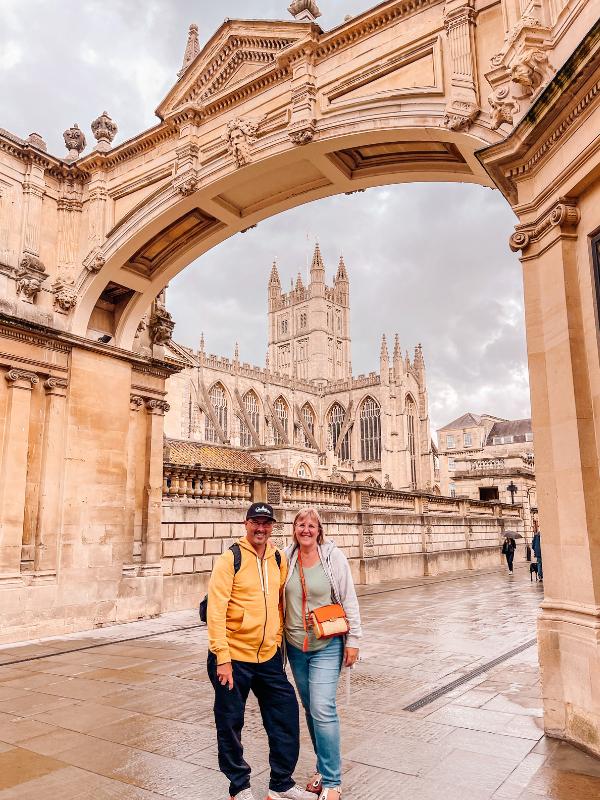

Bath is one of my favourite places in the UK and is one of the must-do places to visit in England. It’s the only UK city to have UNESCO World Heritage status.
Located 114 miles / 183 km west of London, Bath is easily accessible by motorway, bus and rail.
Bath is best known for its honey-coloured Georgian architecture and Roman sites. It’s a city made for wandering and you’ll soon see why it served as inspiration for Jane Austen and a backdrop for films and tv series such as Bridgerton.
Top 5 things to do in Bath
- The Roman Baths – Dating back to AD70, these baths are the best preserved of their kind in the world. Interactive exhibits and CGI reconstructions will show you what life was like in Bath in Roman times.
- The Royal Crescent – a 500 ft long collection of 30 houses, the Royal Crescent is the best example of Georgian architecture in the U.K.
- The Jane Austen Centre – Discover the life and works of the famous novelist through exhibits whilst costumed actors explain how living in Bath influenced Austen’s writing.
- Take in a view – Whether you stroll the Bath Skyline or climb the 212 steps of Bath’s Abbey Tower, there are spectacular views to enjoy.
- Join a walking tour – You can choose between free or paid tours but a guided tour is the best way to see the highlights of Bath, and its filming locations, in a short time.
Oxford
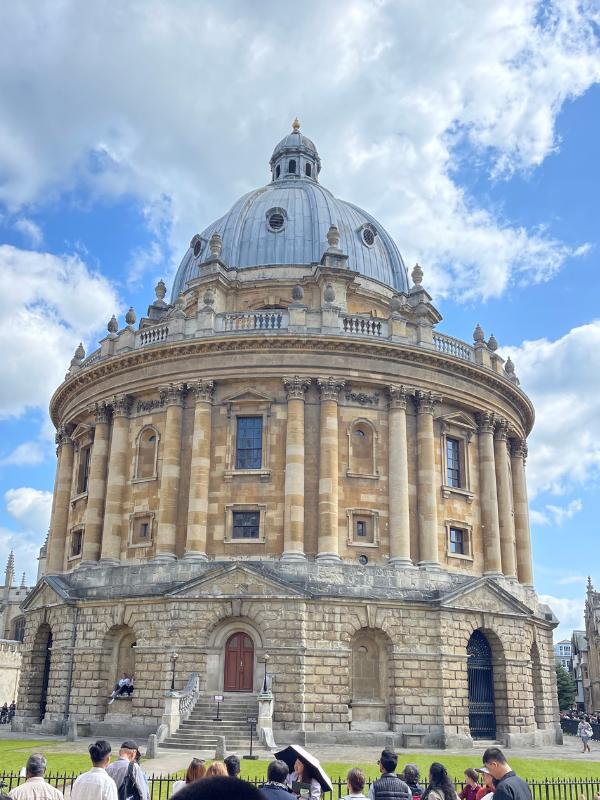

The city of Oxford is world-famous for its prestigious university but there is more to see than just university buildings. Oxford is an easy bus, rail or car day trip from London as it’s only 60 miles / 90 km north west of the capital.
If you love history and literature, Oxford is unmissable.
Top 5 things to do in Oxford
- Visit the colleges – Explore the grounds of Oxford University colleges. Start with Christ Church and Magdalen, which I think are two of the most impressive colleges to visit.
- Ashmolean Museum – Britain’s oldest public museum houses a large eclectic collection including art, archeological artefacts and musical instruments. It also has a rooftop bar offering fabulous views of the city.
- Take a walking tour – If you’re short on time, a walking tour is the best way to explore Oxford. Some tours offer a themed angle such as history, architecture or Harry Potter filming locations.
- Visit the Bodleian Library – Bibliophiles can enjoy after-hours tours of one of the world’s oldest, largest (and still working) libraries which dates back to 1602.
- The Botanic Garden – This gorgeous 130 acre garden is the U.K’s oldest botanic garden. If you’re a fan of ‘His Dark Materials’ trilogy, you can sit on Will and Lyra’s bench in the gardens.
Cambridge
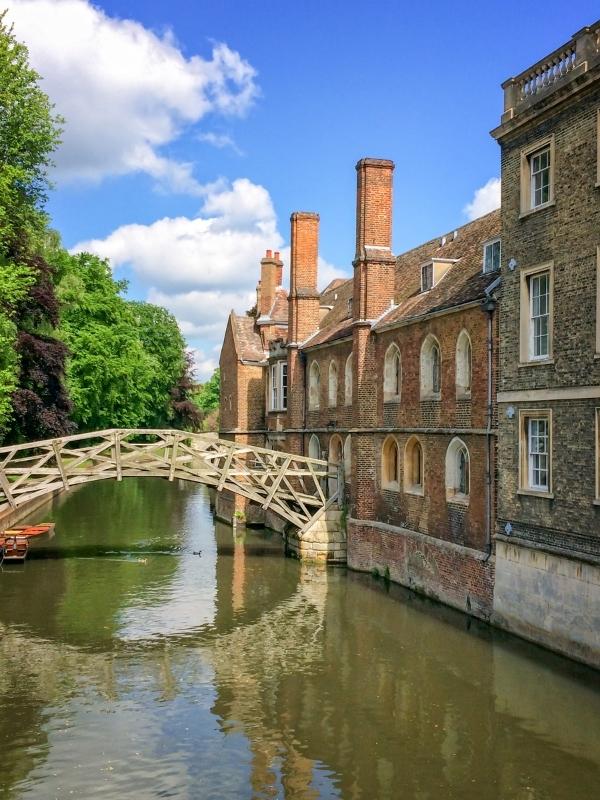

Another city synonymous with its university is Cambridge. Just 60 miles / 96 km north of London, Cambridge is a quick and easy day trip from London by road, bus or rail.
It’s a green leafy city steeped in history and is packed with museums, independent shops, cafes, pubs and restaurants. It’s a must-visit though I guarantee you’ll want to stay longer than just one day.
Top 5 things to do in Cambridge
- Visit University colleges – My top pick of the 31 Cambridge colleges open for visitors is Kings College, founded by Henry VI in 1441. The ornate King’s College chapel is unmissable.
- Go punting on the Cam – You can hire your own boat but to learn more about the colleges and buildings you travel past, I recommend taking a guided tour.
- See the Mathematical Bridge – An 18th century ‘curved’ bridge made entirely of straight wooden planks.
- Fitzwilliam Museum – A prestigious (and free) museum packed with Greek, Roman and Egyptian artefacts.
- The Polar Museum – One of Cambridge’s lesser visited museums, this fascinating free museum is all about the ‘exploration, science and survival’ in polar regions.
Northumberland Coast/Hadrian’s Wall
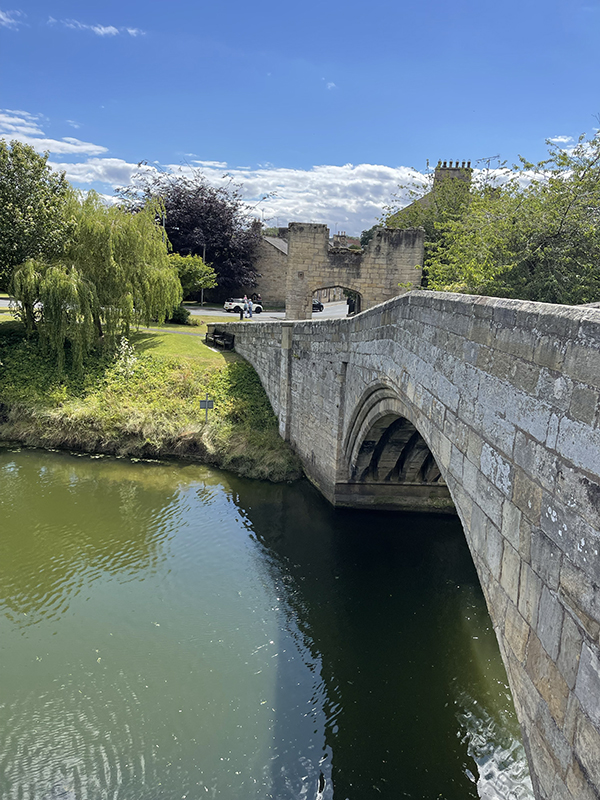

Despite being one of the best places to visit in England, Northumberland is one of the least visited by overseas visitors.
This northeast county borders Scotland and it has it all; charming towns, stately homes, historic attractions and castles, amazing beaches and wildlife opportunities.
To fully explore everything Northumberland has to offer, you’ll need to join a tour or hire a car.
Top 5 things to do in Northumberland
- The Holy Island – Cross the causeway to Lindisfarne, the Holy Isle, once the home of St Cuthbert. You can visit the 12th century priory and the 16th century castle.
- The Farne Islands – Take a boat trip to the Farne Islands, one of England’s prime seabird colonies boasting 23 different species.
- Alnwick Castle and Gardens – Imposing Alnwick Castle offers a fun day out for all ages and was a filming location for the Harry Potter movies. The nearby 12 acre Alnwick Gardens (a separate entry fee applies) date back to 1750 and feature landscaped grounds complete with a Poison Garden!
- Northumberland beaches – Northumberland’s sandy beaches here are some of the best in England. I recommend Bamburgh Beach overlooked by Bamburgh Castle and Embleton, close to Dunstanburgh Castle.
- Hadrian’s Wall – You can see the wall in several locations in Northumberland but I recommend Housesteads or Sycamore Gap. Make time to visit the outstanding Vindolanda Roman Fort in Bardon Mill.
Durham


Surprisingly overlooked in favour of other cathedral cities, Durham deserves its place on my best places to visit in England list.
Situated between Yorkshire and Northumberland in northern England, Durham offers historical, cultural and natural attractions for all ages.
It’s a small city so you can explore on foot without a car. Durham is best reached by rail from London, a journey of around 3 hours.
Top 5 things to do in Durham
- Durham Cathedral – The UNESCO listed 12th century Romanesque cathedral is a Harry Potter filming location but is best known as the resting place of St. Cuthbert and St. Bede and for its stunning stained glass. Climb the 325 steps of the central tower for a 360-degree view of the city.
- Durham city centre – A maze of pedestrianised streets and vennels (alleyways), a wander around the city centre is well worthwhile. Make time to visit the indoor Victorian market which boasts over 60 independent stalls.
- Durham Castle – Built in 1702, Durham Castle is today part of the University of Durham. You can take 90 minute student-led tours to discover the history and artefacts found in the castle.
- Beamish – 9 miles / 14 km north of Durham, Beamish is a living open air museum. Visit the school, shops, and mine and take a ride on a vintage bus or tram. Beamish deserves 1 full day and should be added to all England itineraries.
- Walk the Wear – Stroll the 3 mile long path next to the River Wear for fantastic city and cathedral views.
Liverpool
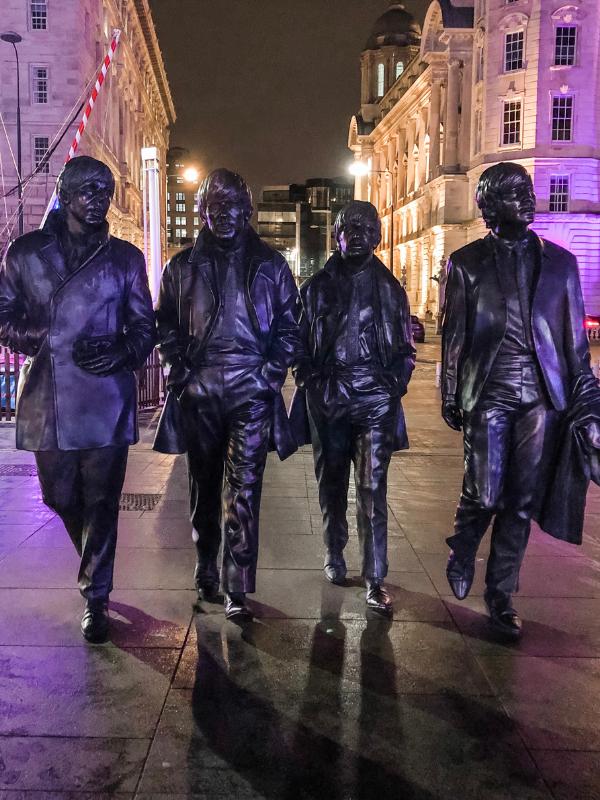

When people think of Liverpool, they immediately think of football and The Beatles. But there’s more to this northwest English city than that.
Liverpool is a vibrant, cosmopolitan city with excellent museums, great restaurants and a lively nightlife. It’s a fun and welcoming place to visit.
Liverpool is a 4 – 5 hour drive from London or just under 3 hours by train.
Top 5 things to do in the Liverpool
- The Beatles Story – A museum housing the largest collection of Beatles memorabilia in the world. It includes recreations of the original Cavern Club, Abbey Road studios and has an interactive zone where you can make your own music.
- The Cavern Club – Forever associated with The Beatles, today’s Cavern Club is a restaurant, pub and live music venue.
- Take a ferry across the Mersey – Enjoy a 50 minute sightseeing cruise to see Liverpool’s iconic skyline from a different angle.
- The Albert Docks – This bustling, regenerated dockland has trendy bars, cafes and boutique shops. It’s also home to Tate Liverpool, the Mersey Maritime Museum and the International Slavery Museum
- Take a tour of Anfield – For football fans, a tour of Anfield – home of Liverpool F.C – or Hill Dickinson Stadium, the home of Everton, is a must visit. Even non-football fans will enjoy the engaging 60 minute tours.
Devon
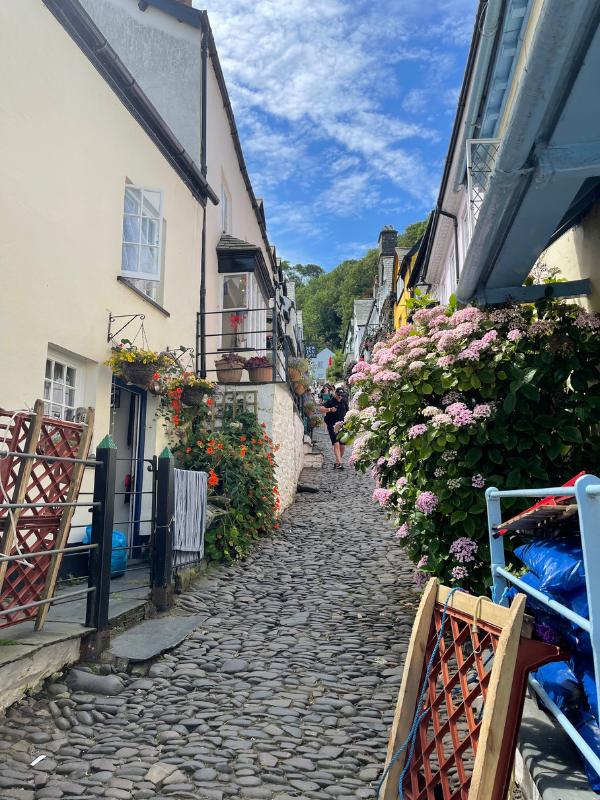

The southwest county of Devon is sandwiched between Cornwall and Somerset, around 164 miles / 264 km west of London.
It’s long been a favourite with British holidaymakers for its natural scenery, stunning sandy beaches and, of course, its Devonshire cream teas.
You can reach Devon by road, rail or bus from London but you’ll need a car to explore the county.
Top 5 things to do in Devon
- Dartmoor National Park – A windswept moorland landscape, Dartmoor is known for its granite hilltops (called tors), wooded river valleys, hikes and wildlife.
- Devonshire Beaches – If you like mile after mile of sandy beach, head to Devon; it boasts some of the best beaches in the U.K. You can learn to surf at Croyde Bay, go kitesurfing in Woolacombe or build sandcastles in Bantham.
- Hike the Southwest Coastal Path – This is the UK’s longest national trail at 630 miles / 1, 013 km. Even if you just hike a small section, you’re guaranteed spectacular coastal views.
- Explore a castle – My pick of Devon’s castles include Powderham and the granite built Castle Drogo.
- Clovelly – One of the prettiest villages in England, privately-owned Clovelly is car free and perches 400 ft up a cliff on the north Devon coast.
Cornwall
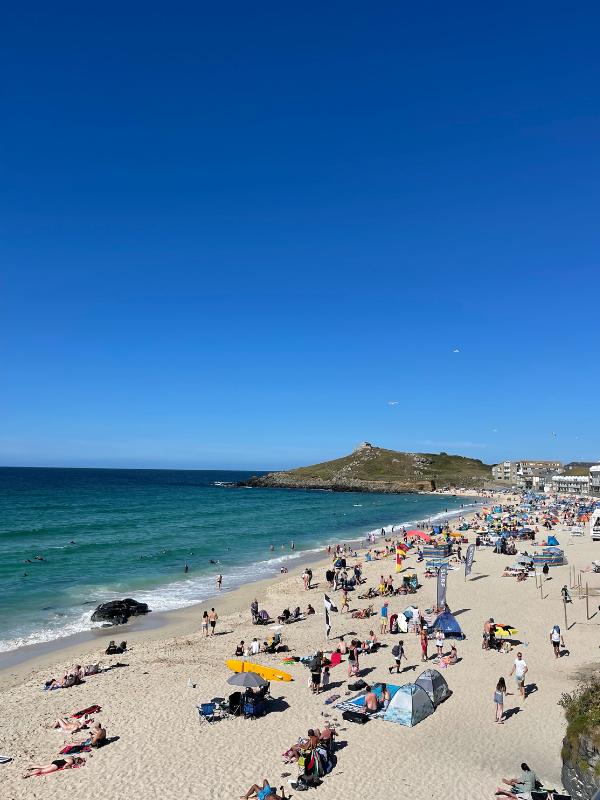

If you have the time, Cornwall is undoubtedly one of the best places to visit in England.
The southwest county is 225 miles / 364 km from London so many travellers choose to travel to Cornwall by train. However, you’ll need to hire a car or join a tour once you arrive to fully explore the county.
Cornwall is a special place offering some of the most unusual and memorable attractions in England.
Top 5 things to do in Cornwall
- Tintagel – Explore the ruins of 13th century Tintagel Castle on the rugged north Devon coast, visit Merlin’s Cave and brave the 70m footbridge.
- St. Michaels Mount – Cross the tidal causeway to this picturesque rocky island topped by a mediaeval church and castle.
- The Eden Project – Visit the unique biomes which together make up one of the largest and best botanic gardens in the world.
- The Minack Theatre – Perched on the rugged cliffs of south west Cornall, this open air theatre is built into the cliff face overlooking the ocean and stages up to 200 shows per year.
- Land’s End – Grab a selfie at England’s most southerly point.
The Cotswolds
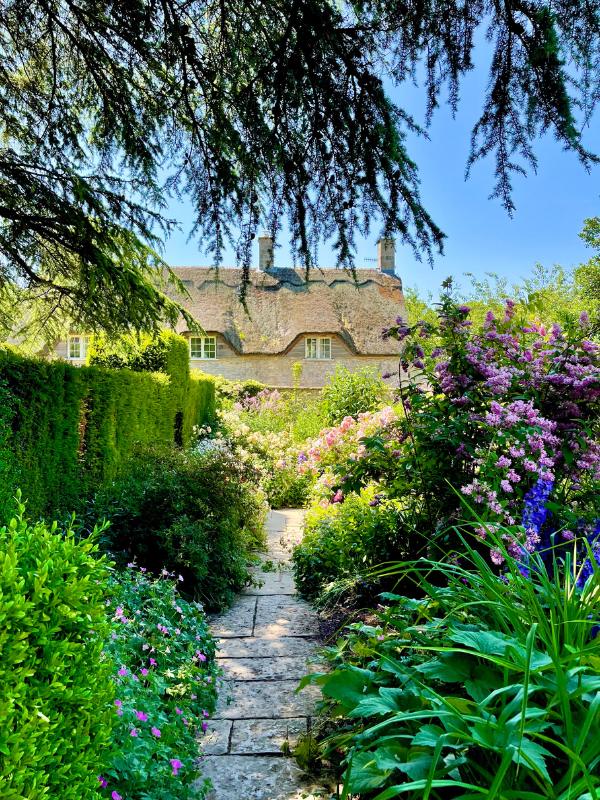

This Area Of Outstanding Natural Beauty in southern England covers parts of six English counties.
It’s best known for its green rolling hills and pretty villages of centuries old honey-coloured houses. If you’re hoping to see the English villages you’ve seen on tv and film, The Cotswolds is the place to come.
You can reach The Cotswolds in under 2 hours by road, rail or bus from London but to fully explore the area you’ll need a car or join a tour.
Top 5 things to do in the Cotswolds
- Walk the Cotswolds Way – This 102 mile trail starts in Bath and ends in Chipping Campden. You can walk much smaller sections and enjoy quintessential English views along the way.
- Visit chocolate box villages – The picturesque Cotswolds villages are the area’s main attractions. My favourites include Bibury, Lower Slaughter and Burford.
- Explore Sudeley Castle – This 15th century castle and gorgeous gardens in Winchcombe was home to Katherine Parr, the last wife of Henry VIII.
- Cheltenham – Visit the spa town of Cheltenham, packed with elegant Georgian architecture. It also boasts a variety of fantastic street art.
- See Arlington Row – Arguably one of the most idyllic streets in Britain, Arlington Row in Bibury is a collection of picture-perfect 14th century stone cottages.
Peak District
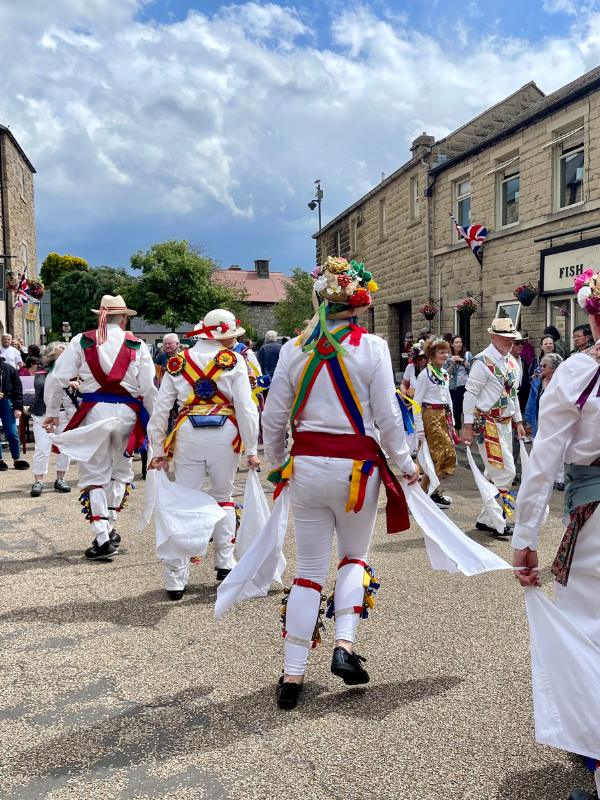

The Peak District in the East Midlands encompasses several counties but is mostly in Derbyshire.
It’s a rural area known for its limestone hills, river valleys, caves, market towns and attractive villages. The Peak’s largest towns can be reached by rail or bus from London and, although a car is the best way to explore the Peaks, there’s also a good public transport network around the region.
The Peak District National Park is the oldest national park in England and offers scenic hiking trails for all ages and abilities.
Top 5 things to do in the Peak District
- Chatsworth House – One of the best stately homes to visit in England, Chatsworth House near Bakewell boasts 21 open-to-the-public rooms and a stunning 105 acre garden.
- Bolsover Castle – A hilltop Stuart-era mansion with 17th century gardens and a scenic wall walk. Learn about the castle’s long history through interactive exhibitions and costumed actors.
- Hardwick Hall – An impressive Elizabethan manor house near Chesterfield that featured in the Harry Potter movies.
- Explore a Peak town – Peak District towns have a distinct character with each offering something different. Foodies should head to Bakewell, hikers and cavers to Castleton and history buffs to Eyam.
- Go for a hike – Cross the stepping stones over the River Dove in Dovedale, amble the family-friendly Tissington Trail, climb to the top of Stanage Edge near Hathersage or bag Mam Tor or Kinder Scout, the highest peak in the region.
Jurassic Coast
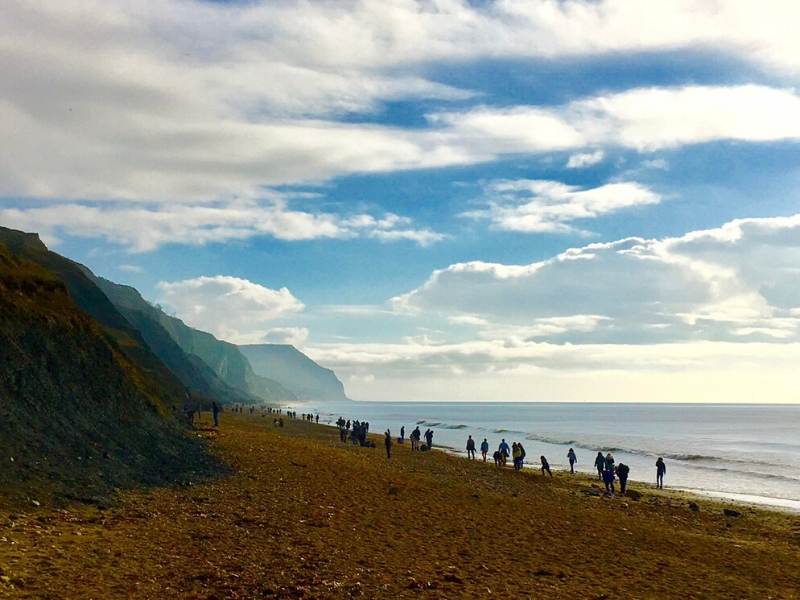

The Jurassic Coast is in Dorset, on England’s southern coastline. It stretches for 96 miles / 155 km from Exmouth in East Devon to Studland Bay in Dorset and is a UNESCO World Heritage Site.
It’s an Area Of Outstanding Natural Beauty and is best known for its Victorian seaside towns, beaches and for the fossils you can find which date back to the Triassic, Jurassic and Cretaceous periods.
Top 5 things to do on the Jurassic Coast
- Lyme Regis – This west Dorset town boasts family-friendly sandy beaches and coastal walks.
- Chesil Beach – An 18 mile / 29 km long pebble beach which attracts fossil hunters from all over the world. Behind the beach is a large saline lake, Fleet Lagoon, which is one of the few remaining undisturbed brackish lagoons left in the world.
- Durdle Door – One of England’s most iconic landmarks, this natural stone arch straddles the sea in Lulworth Cove.
- Corfe Castle – Explore the atmospheric ruins of Corfe Castle near Wareham, which was built shortly after the Norman Conquest in 1066.
- Weymouth – Best known for its Blue Flag sandy beach and harbour, Weymouth also offers birdwatching wetlands, Portland Castle and Nothe Fort.
Yorkshire Moors/Dales
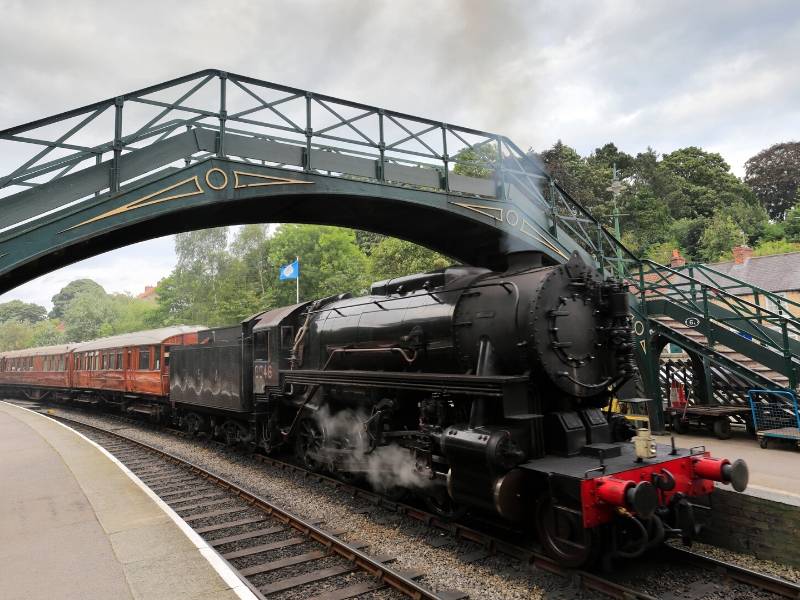

The Yorkshire Moors and Dales are a 1 hour drive from the City of York. You can also take a longer bus ride or connecting trains from York but to fully explore these areas, I recommend hiring a car or joining a tour.
Known for its green rolling hills and deep valleys, the Yorkshire Dales is dotted with quintessential English villages and attractive market towns.
In contrast, the Yorkshire Moors is an atmospheric, windswept landscape of small hamlets, moorland, gorse and heather which slopes down to meet Yorkshire’s dramatic Jurassic coastline.
Top 5 things to do in the Yorkshire Moors and Dales
- Malham Cove – This 250ft high natural stone amphitheatre featured in the Harry Potter movies. Climb the steps to the plateau for far reaching views of the Yorkshire Dales.
- Waterfalls – Some of the many waterfalls to visit include idyllic Janet’s Foss, the iconic Aysgarth Falls and Hardraw Force, which is the highest single drop waterfall in England.
- North York Moors Historic Railway – This hop-on hop-off heritage steam railway is the best way to explore the Yorkshire Moors. You can go hiking in Levisham or visit Goathland, which doubled as Hogsmeade in the Harry Potter movies.
- Bolton Abbey – Home to the Duke of Devonshire, this expansive family-friendly estate has abbey ruins, woodland walks and waterfalls.
- Hiking – Whether you choose to tackle Ingleborough (one of Yorkshire’s highest peaks), the family-friendly Ingleton Waterfalls Trail or the dramatic Hole of Horcum on the Moors, you’ll find hiking trails to suit all ages and abilities.
Hampshire
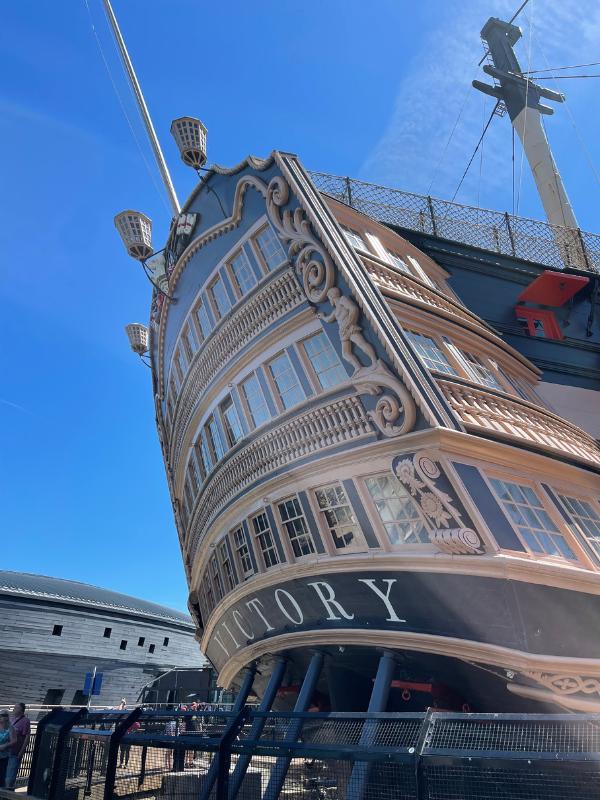

The south coast county of Hampshire is hugely underrated as a tourist destination.
It offers unique historical attractions, wildlife, nature, grand estates, country villages and bustling cities.
If you want to get off the usual England tourist trail, I recommend spending time in Hampshire.
The county has good bus and rail links so getting around without a car is possible.
Top 5 things to do in Hampshire
- The New Forest – One of the largest unenclosed forests in England, the New Forest was proclaimed a royal forest by William the Conqueror and was a favourite hunting ground of Henry VIII. Go for a hike, ride a mountain bike, visit a chocolate box village or spot one of the free roaming ponies.
- The historic dockyard in Portsmouth – You’ll need at least a full day to visit the remains of the Mary Rose, Lord Nelson’s flagship HMS Victory and the Victorian HMS Warrior.
- Winchester – Visit Jane Austen’s grave in Winchester Cathedral or see King Arthur’s Round Table in Winchester Castle.
- Highclere Castle – Better known as Downton Abbey, Highlere is a short 24 miles / 69 km from Winchester. Take a tour to discover filming locations from the much loved TV series.
- Isle of Wight – Take a 20 minute ferry ride to the Isle of Wight to visit Carisbrooke Castle and Osborne House, once home to Queen Victoria.
Canterbury
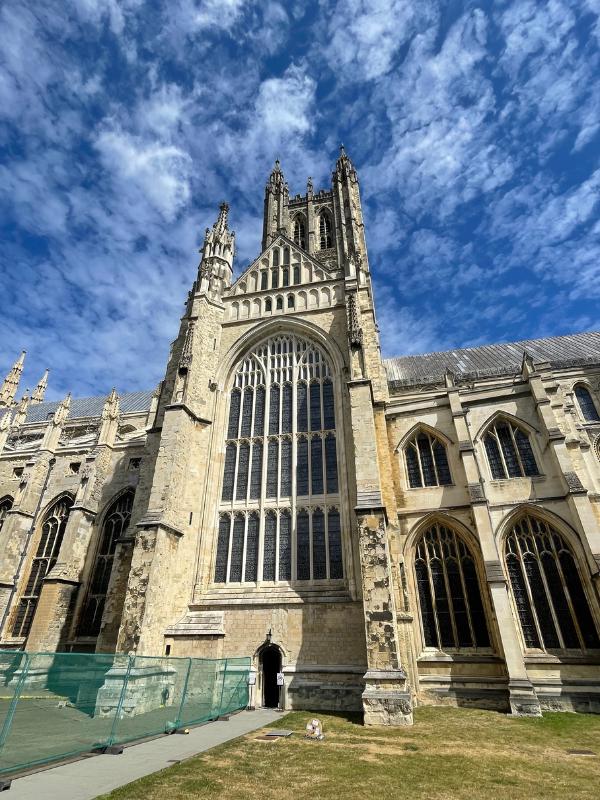

The small city of Canterbury in southeast England is just 67 miles / 108 km from London. You can reach it in under 1 hour by train from St Pancras so it’s one of the quickest and easiest day trips from London.
It’s a historic city easily explored on foot and has a vibrant vibe due to its three universities.
If you travel by car you could combine a visit to Canterbury with Leeds Castle or visit the white cliffs in Dover.
Top 5 things to do in the Canterbury
- Canterbury Cathedral – The seat of the Archbishop of Canterbury, the awe-inspiring Canterbury Cathedral is a UNESCO World Heritage Site. It was built in the 11th century and gained notoriety after the murder of Archbishop Thomas Becket in the cathedral in 1170.
- The Canterbury Tales Museum – Discover the stories of Geoffery Chaucer’s ‘The Canterbury Tales’ featuring animatronic tableaus which bring the stories to life.
- The Roman Museum – an engaging museum about life in Canterbury in Roman times. It has one of the U.K’s only remaining in situ Roman pavement mosaics and is a Scheduled Ancient Monument.
- Go punting on the River Stour – Hire a punt or take a guided boat tour on the River Stour. Look out for the 13th century Greyfriars’ Chapel, the 12th century King’s Bridge and the creepy mediaeval era ducking stool outside the Old Weavers House.
- Westgate Gardens – One of the oldest parks in England, this pretty riverside park offers a break from the busy city centre.
Wiltshire
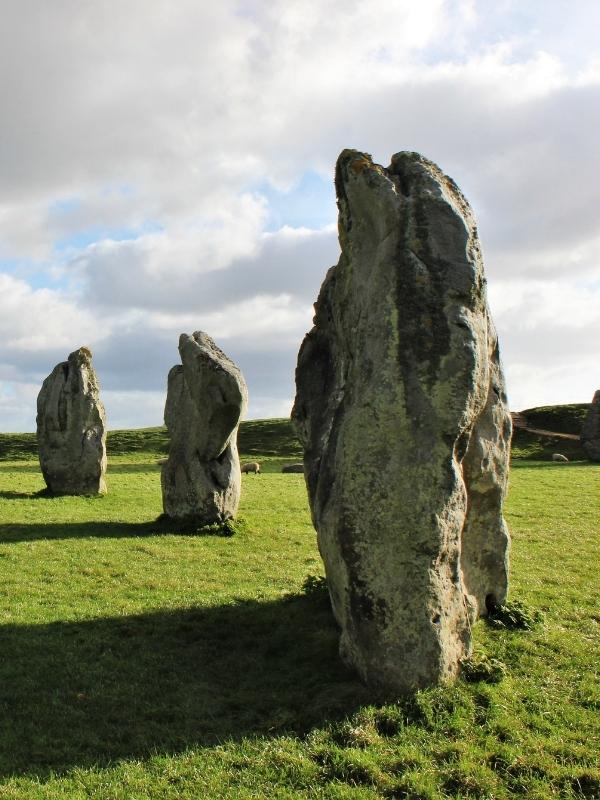

Wiltshire is a beautiful county in southwest England. It’s around 100 miles / 160 km west of London and has excellent road, rail and bus links to London.
It’s one of the best places to visit in England as you can easily visit 3 of England’s most important historical sites in one day.
There are good bus links around the county but to visit several attractions within a short time, you’ll need a car.
Top 5 things to do in Wiltshire
- Stonehenge – The UNESCO listed Stonehenge is one of the best known prehistoric sites in the world dating back 4,500 years. Explore the visitors centre, recreated neolithic houses and visit the outer stones. You’ll need to book a tour to access the inner stones.
- Avebury – The stone circles at UNESCO listed Avebury are believed to be older than Stonehenge. The outer stone circle is the largest prehistoric circle of standing stones in the world and the stones are also the heaviest of any stone circle found in Britain.
- Salisbury Cathedral – The charming city of Salisbury is dominated by the magnificent Salisbury Cathedral which has the tallest cathedral spire in Britain. It also boasts Britain’s largest cathedral close and cloisters, the world’s oldest mechanical clock and the best preserved original copy of the Magna Carta.
- White Horses – Wiltshire has 8 large white horses carved into the sides of its chalky hills. The oldest horse on Westbury Hill dates back to 1778!
- Stourhead – These world-famous National Trust landscaped gardens first opened in 1740 and today cover 2,650 acres.
Which of these amazing places to visit in England will you include in your itinerary?
I hope my round-up of the best places to visit in England has helped you start planning your perfect England itinerary.
We have articles about each of these destinations to help you do more in-depth research, but we are sure this article will help you choose why you would like to visit.

